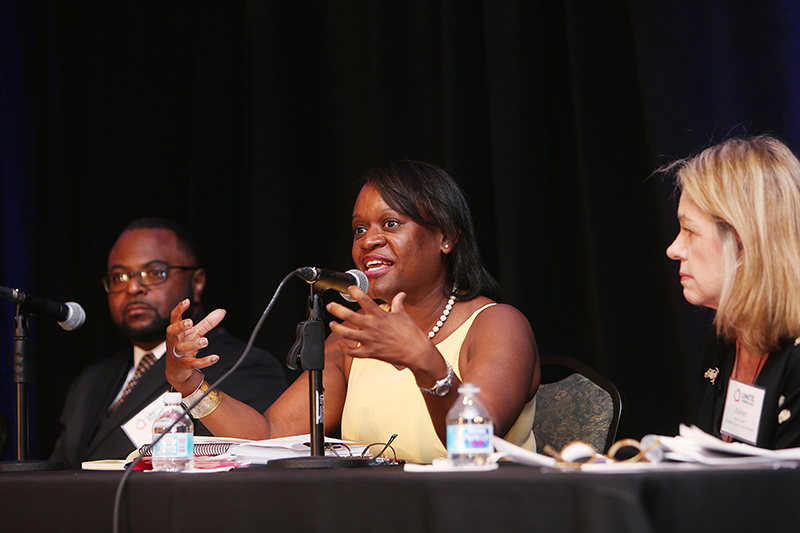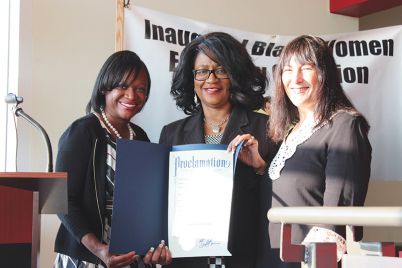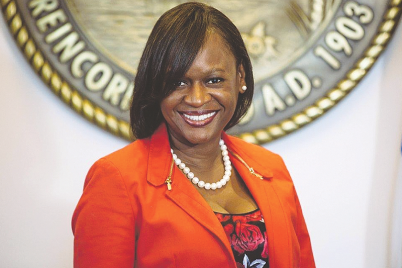On April 18, UNITE Pinellas, a new organization designed to increase equity in Pinellas County, presented findings from the first ever countywide assessment on equity.
By J.A. Jones, Staff Writer
ST. PETERSBURG – More than 300 community members and leaders, nonprofit organizations and city officials gathered to hear data from the 2019 Pinellas Equity Profile on April 18.
The event was presented by UNITE Pinellas, a new coalition of groups that have come together to create change in the current landscape of a very “inequitable” Pinellas County.
A major factor inspiring the UNITE Pinellas program is the demographic shift the county is experiencing.
While population numbers for 2020 show that 28 percent of the county will be non-white and 72 percent white, by 2050 that number is projected to rise to 50% people of color in Pinellas–following the national trend predicting a majority U.S. population of color by 2044.
Herein lies the issue: with Pinellas County displaying ongoing racially discriminatory policies, practices and inequitable resource distribution, it is setting itself up for a future that will fail its larger population – and creating an unstable, endangered future for the entire county.
Another reason to address these disparities is that research indicates Pinellas’ local economy would increase by a whopping $3.6 billion if it addressed and fixed its income inequity.
The data, supplied by PolicyLink out of Oakland, Calif., and the University of Southern California’s Program for Environmental and Regional Equity, showed disparities in Pinellas in every researched area from education to job training, to housing, to highly discriminatory policing and justice policies.
The bad news in Pinellas County includes:
- While 41 percent of jobs in Florida will require an Associate degree or higher, only 32 percent of Latinx and 28 percent of African Americans in Pinellas hold one
- Child poverty rates among blacks are 43 percent and among Latinx is 27 percent, while only 15 percent among whites
- Median hourly wage declined among workers of color since 2000, while it increased among white workers; white worker’s median hourly wage rose from $19.90 to $20.20, while the median hourly wage among people of color decreased from $16.50 to $15.20
- Unemployment among blacks is four points higher (10 percent) than among whites (six percent)
- 69 percent of whites own their homes, while only 35 percent of blacks and 41 percent of Latinx residents own homes
Other apparent Pinellas inequities include differences in high school degrees, numbers of “disconnected youth” (those who are neither in school or working), arrest disparities and nonviolent felony and drug convictions among blacks and whites.
The gathering also included a panel including Dr. Kanika Tomalin, St. Petersburg deputy mayor and city administrator; Karen Williams Seel, chair of the county commission; St. Petersburg Police Department Community Intervention Director Rev. Kenny Irby and Brother John Muhammad, director of New Deal for St. Pete.
Members of the UNITE Pinellas Coalition include Foundation for a Healthy St. Petersburg, United Way Suncoast, Juvenile Welfare Board, Pinellas Education Foundation, Pinellas County Schools, Pinellas County Urban League, Pinellas Community Foundation, One Community, New Deal for St. Pete, St. Pete Chamber of Commerce, St. Petersburg College, Tampa Bay Healthcare Collaborative and others.
UNITE Pinellas’ Executive Director Tim Dutton shared remarks on the dire urgency of addressing these and other inequities:
“The success and prosperity of Pinellas County will rely on dismantling these unjust barriers and ensuring that everyone can participate and enjoy the benefits of a thriving economy,” he said. “Strategies for impacting systems will rely on the wisdom and co-creation of those people most impacted by the policies, practices and ‘blame narratives’ that perpetuate inequity.”
While the UNITE Pinellas gathering, report and stated intention to address these inequities in such a bold way were a first in the county, it remains to be seen how these disparities will be addressed.
The coalition noted that in the next twelve to 24 months, the Equity Profile would be used to “help pinpoint areas that deserve more detailed examination related to the policies, institutional practices and narratives.”
For more information on UNITE Pinellas or to view the Equity Profile, visit unitepinellas.org.
To reach J.A. Jones, email jjones@theweeklychallenger.com








